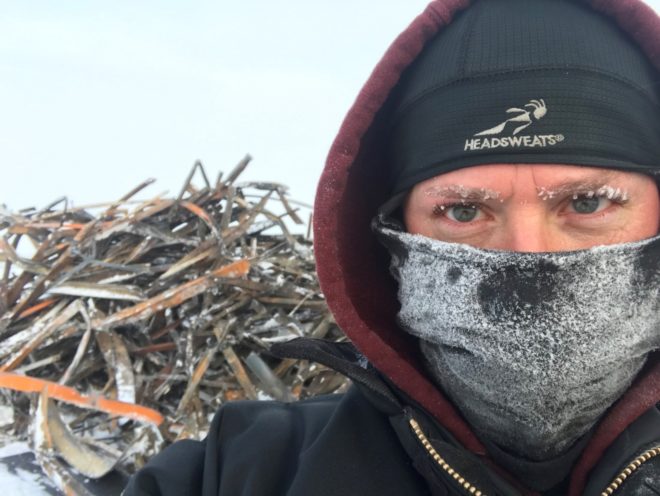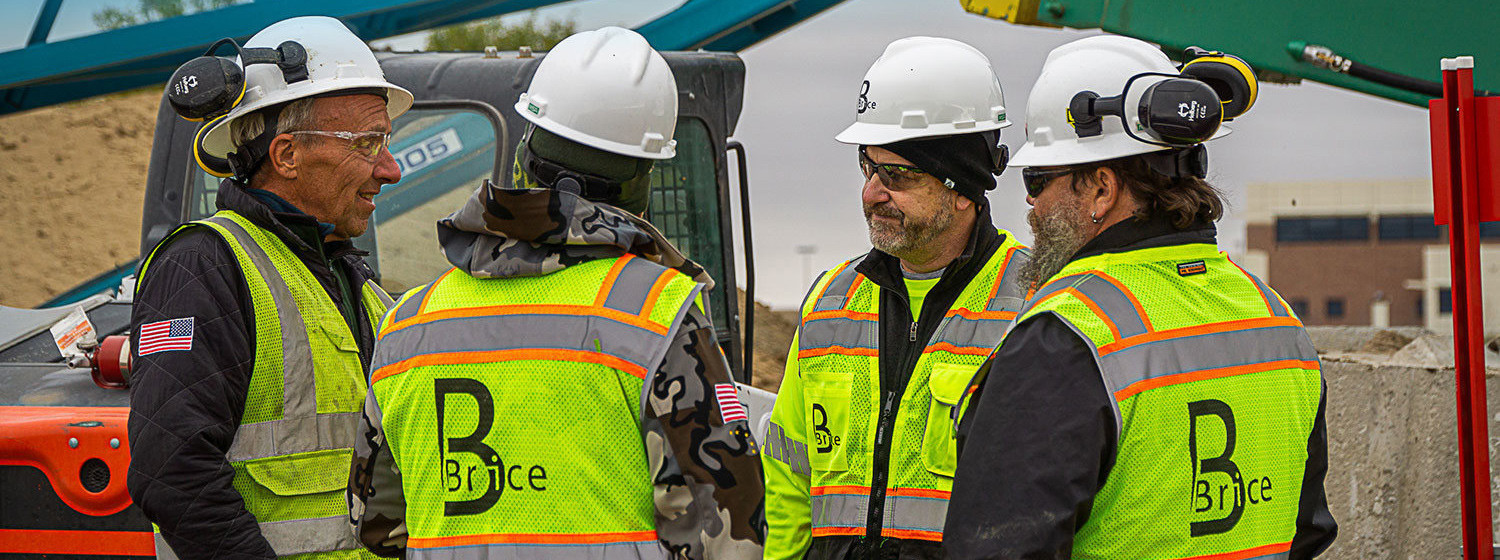This past February, a team of four Brice staff led by Environmental Scientist, Ryan Rapuzzi, flew north of Anchorage to establish a couple of ice fishing tents on two, 20-acre ponds in Nome, Alaska. But this was no fishing expedition with the goal to return home with coolers full of catch. Rather, the Brice team had set up camp to “fish” for former FAA Radio Range Towers and lead-impacted sediment.
When it comes to project execution in Alaska, the summer field season is infamously short, stretching company resources to the hilt. Yet occasionally, we get a project that keeps a handful of Brice staff billable in the dead of winter. While the recent purchase of former Kaktovik heavy equipment put Brice on the North Slope, making it the coldest conditions in which we now work, a close second is the recent execution of the FAA Nome Radio Range and Communications Transmitter: Demolition, Remedial Action, and Release Investigation. The objective of this mobilization was to remove two former FAA towers submerged in tundra ponds, as well as lead-impacted sediment, at the height of winter (the remaining scope of work, demolition and RI/RA work, are planned for this summer).
For 10, 12-hour days in temperatures as low as -20 °F (ambient temperature or -45 °F with wind chill) and no higher than -5 °F, a team of four Brice staff willingly labored this past February in Nome. Temperatures actually dropped as low as -35 °F, at which point, field work was put on hold. Surely these frigid conditions are less than desirable working conditions. But for diehard Alaskan residents, it’s part and parcel of living, working, and playing in the Last Frontier. The fact is, executing this FAA project when the pond was frozen was the only way to get the job done. The ability to move across the frozen ponds by foot allowed the field team to be hands on at the site and ensure complete removal of the former FAA infrastructure and contaminated sediment. To make things more adventurous, snow machines and freight sleds were used to access the site and transport portions of the FAA towers back to the staging area (because maintaining vehicle road access became too difficult due to overnight snow drifts).
Donning 1 to 2 layers of clothing underneath arctic-grade coveralls, the team executed the fieldwork. At these temperatures, the team was kept on its toes constantly to keep things warm and in operation. Heavy equipment was left running or hooked up to generators to keep from freezing. The generators themselves needed constant refueling. During the day, the team used propane heaters placed inside the ice fishing tents to keep tools and small equipment warm. To minimize the risk of frostbite and fatigue, the field crew took turns running the skid steer where each person could warm up for an hour before switching out. Hydration was also of concern. Though we often think of the importance of hydration while working in extreme heat, it’s equally important in extreme cold when you’re less likely to notice thirst. Water bottles were kept inside the excavator to keep the water from freezing and Gatorade was staged inside every vehicle.
All in all, the team successfully completed the project without incident, and demobilized with no one, nor any FAA towers, “left out in the cold”😊.

